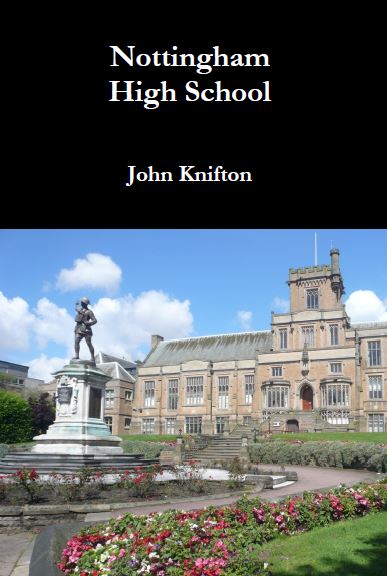On July 22nd 2010, we visited the RAF Museum at Hendon. I took a great number of photographs and these few show the Curtiss Kittyhawk IV.
First a general view of the aircraft, taken from the rear, as the museum is very, very, full. The peculiar colours are because of the strange Jacques Cousteau type lighting which is supposed to prevent deterioration of the original paint from the 1940s. They originally found some thirteen P-40s abandoned in the New Guinea jungle in 1974 but I suppose you can’t be too careful! Incidentally that was the same operation that retrieved the RAAF Beaufort I depicted a little while back:
 Here’s a second view of the Hendon P-40 with perhaps a little bit less of the “Under the Sea” effect and a lot more of that strange deep purple light made famous by the Aviator Formerly Known as Prince. Here’s a very slightly different view of the P-40. And by the way, I don’t know why the question mark is there:
Here’s a second view of the Hendon P-40 with perhaps a little bit less of the “Under the Sea” effect and a lot more of that strange deep purple light made famous by the Aviator Formerly Known as Prince. Here’s a very slightly different view of the P-40. And by the way, I don’t know why the question mark is there:
And here, incidentally, is that Bristol Beaufort, with the link to read about it:
One of the most interesting things about this plane is its name. Manufactured by Curtiss-Wright of Buffalo, New York, the largest aviation company in the USA during the 1930s, the P-40D and subsequent models was called the Kittyhawk by the RAF, the RAAF, the RCAF and the RNZAF as well as the South African Air Force. It was used extensively in North Africa:
The earlier P-40A, P-40B, and P-40C models were called Tomahawks. I have no idea whatsoever why, other than a sneaking feeling that it was just to confuse everybody who wasn’t aware of the story. The Kittyhawk had a more powerful engine and if you like aircraft engines, you can read a tale involving substandard or defective aircraft engines for military use, conspiracy, false testimony, gross irregularities, neglect of duty, troublemakers and a general court martial via this link. Amazingly, the paragraph you need is called “”Defective engines sold to U.S. military in World War II. It was apparently such a big story at the time that Arthur Miller wrote a play about it.
These two pictures show the most famous thing about so many P-40s and Kittyhawks. The shark’s mouth nose art:
On a P-40, the first people to use this design seem to have been the Chinese Nationalist Air Force although they seem to have thought that they were using a big cat, insofar as they were dubbed “The Flying Tigers”. They were still the most famous of the Shark’s Mouth aircraft though:
So just treat yourself to a little bit of the film “The Flying Tigers”. John Wayne at his very best:
In this film, “The Duke” actually speaks Chinese. Two words, “Ding Hao”.
In case you don’t know, “Ding Hao” means good luck, or good day or very good or fantastic and so on. Not as universally applicable a word as “Mao” in “The Deer Hunter” but not bad. It’s quite impressive when one single word is an entire language:







The Beaufort was quite an important part of the Australian effort, particularly in New Guinea. A cursory first viewing can sometimes be reminiscent of the Mosquito. I don’t want to go on about it – I have previously – but the Mosquito must remain my favourite ever aeroplane.
As a little boy, I always used to think that a Mosquito could attack and destroy absolutely anything, no matter how difficult the target. Amiens prison was bombed and the Gestapo building in Denmark was destroyed, seemingly without any problems. It was an aircraft that was too quick to be caught and it didn’t need to have defensive guns, and so on.
But every air force needs reliable and dependable aircraft to do the day-in-day-out ordinary jobs and I suppose that that was the role of the Beaufort, which was very well appreciated in a number of theatres away from Europe, particularly the Far East and the Mediterranean.
Ding Hao! The lighting and close proximity of other aircraft does make for difficult photography at the museum. A shame as there are some excellent examples there.
There certainly are, but I felt kind of cheated when I could not manage a photograph that I thought was worthy of the aircraft themselves. It certainly is a museum for the person armed with a digital camera. I got through all of my batteries and filled most of the space on my memory cards.
How different from the old days of having to buy a film and then pay for the development of the photographs at Boots or the local chemist.
We were a little more ‘selective’ in what we took back then. Often we’re ‘click happy’ now and the number of duff photos I have proved that!
Sharks’ teeth and John Wayne – Wow
To be honest though, Derrick, I’ve never been a huge fan of the Duke. Apparently when the war broke out his agent told him not to join up but to stay behind and to advance his career without any competition from the usual male leads. So, some Hollywood stars such as Jimmy Stewart and Clark Gable went off and did their duty and John Wayne just grew more famous.
So wooden
The only thing I can think of is GAO as being the government accountability office, but I don’t think that existed until after the war.
If I’m not mistaken, those shark’s teeth for the Flying Tigers was a Disney design.
I’ve never heard that before, but it does have a ring of truth about it. The P-40s all belonged to the Chinese Nationalists but they were flown for the most part by American adventurers who would have seen Disney artwork back home, if only subconsciously.
This website though tells a different tale ; https://www.aerosociety.com/news/war-paint-shark-teeth-and-pin-ups-a-brief-history-of-aircraft-nose-art/
It says “The first true piece of nose art, rather than body, tail or paint schemes, was the iconic shark teeth design first seen on a (British) Sopwith Dolphin and German Roland CIIs in World War One
Generally considered as the golden age of nose art, WWII gave rise to the most popular and well known images of nose art. The Shark tooth design made its first appearance in this conflict on the nose of Luftwaffe Bf 110s. Having duelled in the skies above Crete with the ‘shark mouthed’ German fighters, the members of No.112 Squadron RAF copied the shark tooth smile onto their new Curtiss P40s in North Africa. This was copied again by the First American Volunteer group, the Flying Tigers, in China. ”
As Isaac Newton said, “Every question has an equal and opposite solution!!”
Isn’t that always the way.

I’ll have to clarify the in the article, Disney did the patch for the “Tigers”, not the teeth.
Perhaps the idea of teeth arrived via the Wikipedia route and then Disney was the obvious man to go to for the best quality artwork?
Could be.
Though myself also never a huge fan of Wayne I did warm to him in recent years. I liked ‘The Man Who Shot Liberty Vallance’ and ‘The Shootist’. He became, to my mind, a bigger legend than the many real-life characters he portrayed, perhaps not surprising for a man who fought at The Alamo, in the Civil War and also on the Normandy beaches – quite an irony for a man who never actually fought in a real war. I think his roles exemplified the way in which Americans (at least the men) like to think of themselves. I often wonder just how he managed to avoid being drafted, which I thought was obligatory.
This blog post is helpful:
https://www.neatorama.com/2014/06/25/Was-John-Wayne-a-Draft-Dodger/
but in my mind, it is ultimately, too forgiving.
Wayne was completely unwilling to risk his life in a combat situation, rather like at least three recent presidents have been.
This article below is good, but then fails to criticise the bad things it has unearthed:
https://www.quora.com/Did-John-Wayne-deliberately-avoid-being-drafted-into-the-Second-World-War
My own war hero is Jimmy Stewart who was in charge of very large numbers of B-17s over Germany and who gave the order to all of them to drop their bombs.
James Stewart flew B-24 Liberators !
He certainly did, and I have read that as the senior officer he insisted on flying the lead bomber of the entire formation. A real hero and a very brave man!